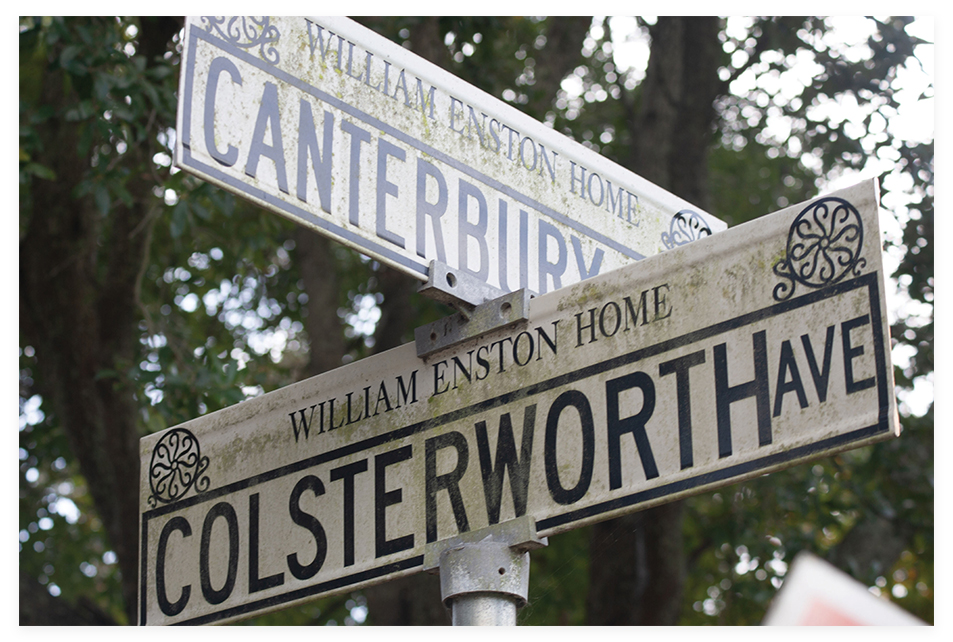Enston’s spirit of healthy living continues in The Green Heart Project’s urban farm

(Left) A bust of Enston erected by the city to honor him in 1889; (Right) Cottage No. 2 was one of the first Enston Homes duplexes built in 1887.
While there might be particular seasons for benevolence and giving back, a gift from 19th-century British expat William Enston has lasted more than a century.
At the corner of King and Huger streets stand the Enston Homes, a bit of an urban utopia in the heart of the city. The property was farmland when William Enston, born in England in 1808, moved to Charleston in 1832. When he died as a wealthy merchant in 1860, he left his fortune to the city, his way of giving back to the place that had been so good to him. Upon his widow’s death in 1886, all the proceeds of his estate went to make his wish come true: supplying houses and a healthy environment to the infirm aged of “good, honest character” but, as was custom of this era, only for white residents.

(Left) The water tower displays Victorian brickwork; (right) The entrance gate.
In a plan based on such communities in his native England, 19 brick duplex cottages were built in the Richardson Romanesque style by 1888. Five more units were added by the early 1930s. The complex, perhaps one of the oldest such communities in the South, included an entrance gate, a community center, a water tower, and an infirmary. Shady lanes curved through the bucolic 12-acre site, bearing names associated with Enston, such as Canterbury, the town in England where he once lived.

Colsterworth Avenue was named after the hometown of Enston’s wife, Hannah.
By the 1990s, the complex had become run down and was revivified after being purchased by the Housing Authority of the City of Charleston, which shifted the mission from housing the elderly to welcoming folks of all ages and races with low to moderate incomes. By 2006, the housing authority added 13 more units. The site was added to the National Register of Historic Places in 1996 and has been called one of the most beautiful public housing projects in the country.
The spirit of healthy living continues in The Green Heart Project’s urban farm on the premises. Enston’s gift to the city is still impacting lives—an even more enduring memorial than the chapel on the grounds, where the city erected a bust of the founder to honor him in 1889.